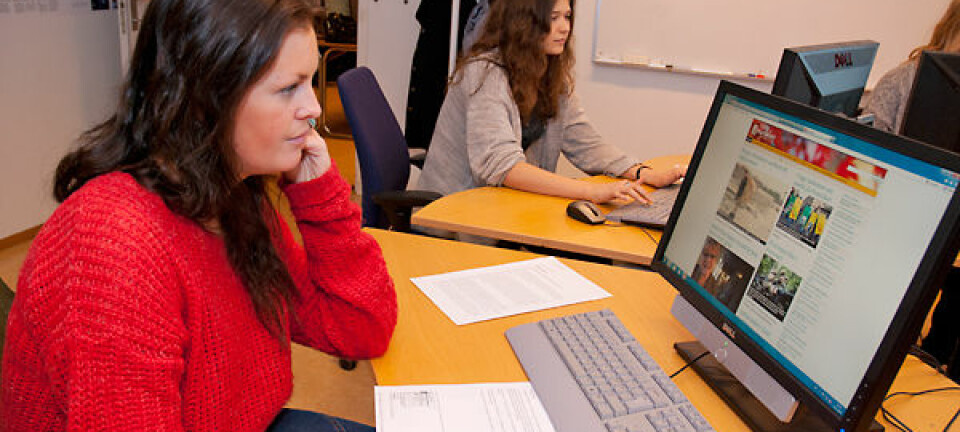
When negativity doesn’t pull the news through
A news journalist has devoted her master’s thesis in psychology to bringing positivity back to journalism, replacing the negativity that is driving readers away.
“Mr. President, good news isn’t news. Bad news is news.” That's what Henry Luce, publisher and editor of Time magazine, once told US President Lyndon B. Johnson.
Many people agree – including news journalist Cathrine Gyldensted, who after eleven years as a journalist on Danish TV, radio and newspapers, felt burnt out and disillusioned.
Her enthusiasm and passion had succumbed to the negativity that characterises her profession, and she considered dropping journalism completely.
By chance, she discovered that the University of Pennsylvania was home to some of the world’s best researchers in positive psychology.

She applied for a master’s course, and wrote a dissertation on using positive psychology in the news business.
Negative news scares readers away
The journalist found that negativity pervades journalism, from the editor’s desk to the finished newspaper. It also affects the readers.
Through a series of test news articles about how funding cut-backs at times of soaring demand and rising prices meant that food pantries in the US faced increasing difficulties in helping hungry people, Gyldensted discovered that readers responded negatively to negative stories, and positively to positive ones.
Using a true, real-life story, she prepared six versions of the news story – one in a classic, negative tone typical of contemporary news reporting, while the other five varied in their negative or positive approach.

The classic version and one of the others were sent to a panel of 710 people around the world, together with a request for comments.
“Their responses all pointed in the same direction,” she says.
“Reading the classic, negative news report put people in a bad mood; they became disengaged and didn’t want to read any more.”
Her study also indicates that a positive tone in a news story, or a story that gives signs of hope, can get people to read newspapers again.
In addition, some of her panel members felt that the more positive stories also gave the most realistic picture of the reported situation.
This is good news for newspapers at a time when their circulations are falling, and Gyldensted adds, “In my dissertation I place great weight on the economic benefits of being more positive in news reporting.”
Balanced news picture
She sees no reason to run only good news stories, but she does want a more balanced news picture.
“I’m not looking for more ‘Cat saved from tree’ stories,” she says, “but I am looking for more nuanced reporting in news stories. Even if a story deals with a conflict, it doesn’t need to be negative – the focus should be on solutions rather than disagreements.”
Gyldensted believes that positivity in reporting should be the norm at journalism schools and should be a natural element in newsrooms.
“A newspaper’s policy is defined at editorial meetings, and positivity should be a news criterion, just as negativity has become,” she says.
“But journalists must be trained in positivity – at the moment no journalists are using positive psychology and it’s not as easy as it may sound.”
Journalists cannot allow themselves to be indifferent, she adds:
"By continuing with negativity in news reporting they drive readers away from their media, sawing off the branch the journalists are sitting on."
--------------------------------------------------
Read this article in Danish at videnskab.dk
Translated by: Michael de Laine







